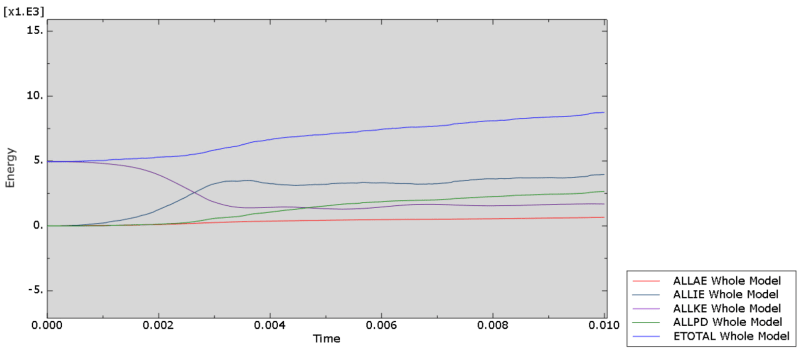Ander Azpi
Student
- Mar 3, 2021
- 7
Hello everyone!
I have lauched an impact simulation, in which a car impacts a wall. The car has a predefined velocity and all materials have plastic definitions. The wall is rigid. The energy results are shown in the image I attach.
Is this correct?? Is it okay that the kinetic energy decreses??
Thanks in advance

I have lauched an impact simulation, in which a car impacts a wall. The car has a predefined velocity and all materials have plastic definitions. The wall is rigid. The energy results are shown in the image I attach.
Is this correct?? Is it okay that the kinetic energy decreses??
Thanks in advance

